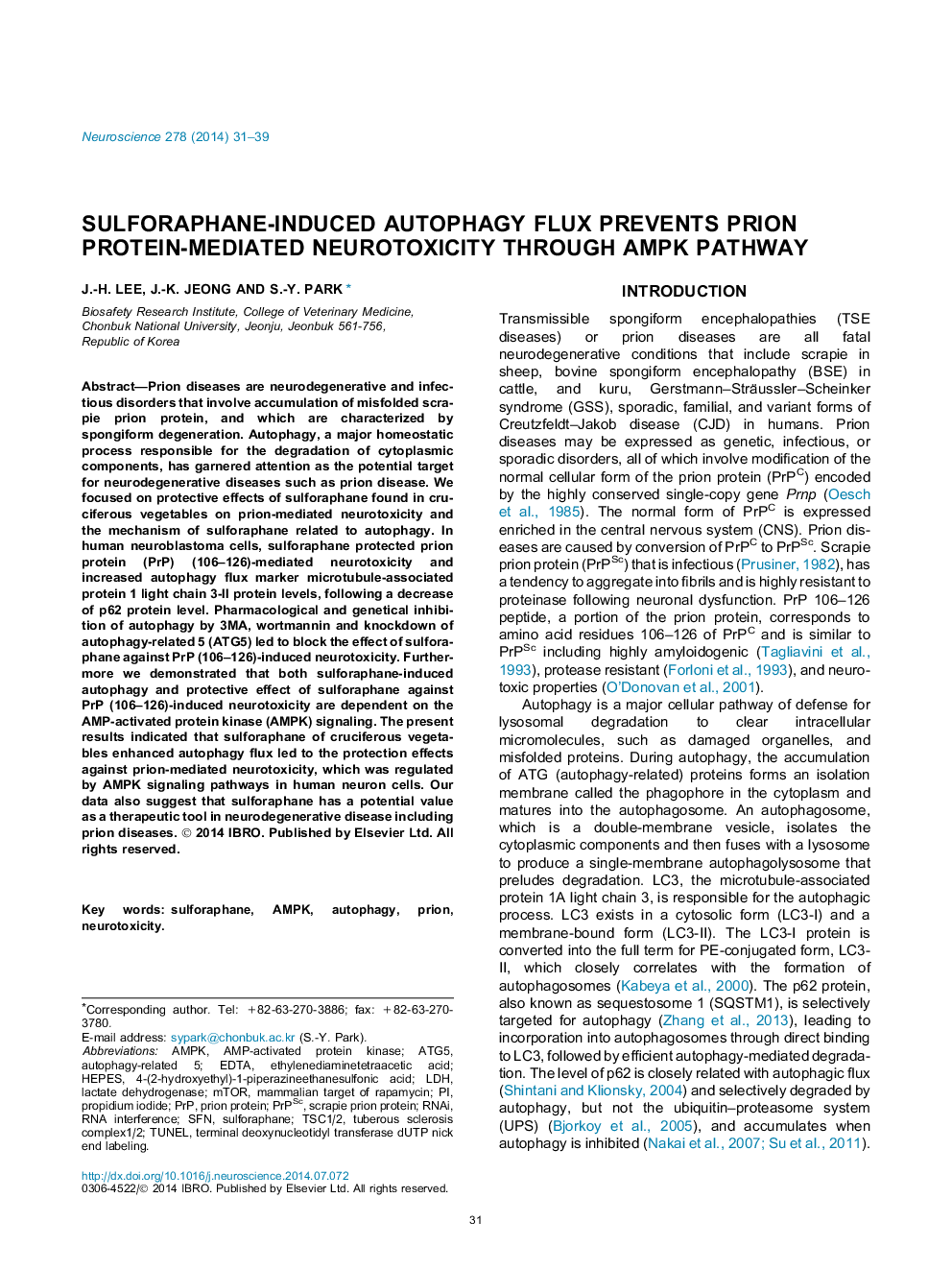| Article ID | Journal | Published Year | Pages | File Type |
|---|---|---|---|---|
| 6273730 | Neuroscience | 2014 | 9 Pages |
Abstract
Prion diseases are neurodegenerative and infectious disorders that involve accumulation of misfolded scrapie prion protein, and which are characterized by spongiform degeneration. Autophagy, a major homeostatic process responsible for the degradation of cytoplasmic components, has garnered attention as the potential target for neurodegenerative diseases such as prion disease. We focused on protective effects of sulforaphane found in cruciferous vegetables on prion-mediated neurotoxicity and the mechanism of sulforaphane related to autophagy. In human neuroblastoma cells, sulforaphane protected prion protein (PrP) (106-126)-mediated neurotoxicity and increased autophagy flux marker microtubule-associated protein 1 light chain 3-II protein levels, following a decrease of p62 protein level. Pharmacological and genetical inhibition of autophagy by 3MA, wortmannin and knockdown of autophagy-related 5 (ATG5) led to block the effect of sulforaphane against PrP (106-126)-induced neurotoxicity. Furthermore we demonstrated that both sulforaphane-induced autophagy and protective effect of sulforaphane against PrP (106-126)-induced neurotoxicity are dependent on the AMP-activated protein kinase (AMPK) signaling. The present results indicated that sulforaphane of cruciferous vegetables enhanced autophagy flux led to the protection effects against prion-mediated neurotoxicity, which was regulated by AMPK signaling pathways in human neuron cells. Our data also suggest that sulforaphane has a potential value as a therapeutic tool in neurodegenerative disease including prion diseases.
Keywords
Related Topics
Life Sciences
Neuroscience
Neuroscience (General)
Authors
J.-H. Lee, J.-K. Jeong, S.-Y. Park,
